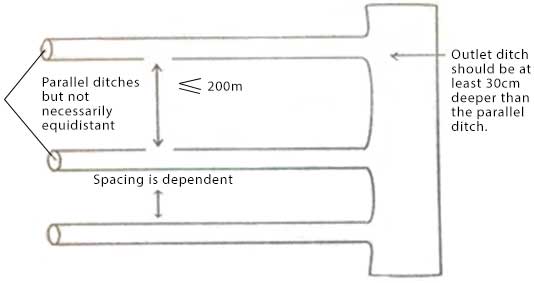DRAINAGE
CONTENT- Meaning of Drainage
- Types of Drainage
- Importance of Drainage/Benefits of Drainage to Agriculture
- Problems of Drainage
Meaning of Drainage
Drainage is the removal of excess water artificially from a farmland to prevent water logging and promote good farming activities. Excess water may be removed through channels, pipes or funnels either from the surface of land or beneath the soil.Types of Drainage (Drainage Systems)
There are two major types of drainage. These are:- Surface drainage
- Sub-surface/underground drainage
Surface Drainage
This is the removal of excess water from the surface of the farmland using constructed open ditches, field drain, land grading and lateral ditches. This is divided into;- Random field surface drainage
- Parallel field drainage

Parallel Field Drain
You are viewing an excerpt of this lesson. Subscribing to the subject will give you access to the following:
- NEW: Download the entire term's content in MS Word document format (1-year plan only)
- The complete lesson note and evaluation questions for this topic
- The complete lessons for the subject and class (First Term, Second Term & Third Term)
- Media-rich, interactive and gamified content
- End-of-lesson objective questions with detailed explanations to force mastery of content
- Simulated termly preparatory examination questions
- Discussion boards on all lessons and subjects
- Guaranteed learning